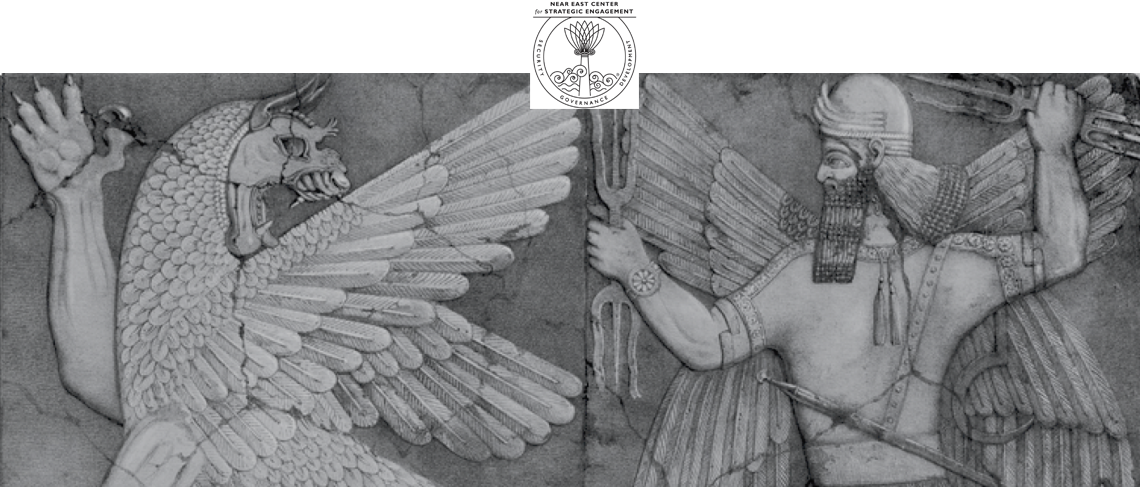The NEC-SE header illustration depicts the Ashur, Marduk, Enlil, or Ninurta fighting Tiamat, the evil dragon of chaos. It may also be interpreted as Jehovah in the Old Testament slaying Leviathan, or St. George in the Christian tradition slaying the dragon.
On 1 APR Assyrians celebrate the Akitu Festival.
Identifying which deity the illustration is being depicted depends on the location of where Akitu was celebrated:
1- In Sumer it was Enlil or Ninurta who slew Tiamat.
2- In Babylon it was Marduk who slew Tiamat.
3- In Assyrian it was Ashur who slew Tiamat,
4- In the Old Testament it was Jehovah who slew Leviathan.
5- In the Christian tradition it was St. George who slew the dragon.
So the deity’s identity determined by which document, script, clay tablet, etc. is being quoted, translated, or referenced.
In the Christian faith the Feast of St. George is astrologically aligned with Easter, which is in turn is astrologically aligned with the Akitu festival. Thus, in celebrating the Feast of St. George we are continuing an ancient tradition that originated thousands of years ago with the celebration of Akitu.
Akitu represents the victory of Good over Evil, and one of the meanings of the term Akitu is “Victory Celebration.
April 1st is the Assyrian New Year. It is the most important national festival handed down thru history from the remote past. The Assyrians of today all over the world celebrate this day. Before Assyrians embraced Christianity in the first century A.D., and according to the ancient calendar, the New Year was celebrated on what would be the 21st of March. Then and now this is the date of the spring equinox, very beginning of spring. Centuries before the fall of the Assyrian Empire in 612 BC when Assyrian kings ruled the Middle East, other peoples such as the Medes, Persians, and Arabs emulated the Assyrians by celebrated the 21st of March as the New Year. After the Assyrians converted to Christianity in the first century and the Gregorian calendar was established in the Christian world. Assyrians also accepted the new calendar and moved their New Year from March 21st to April 1st. Today Iranians and the people of Iraq (Arabs and Kurds) still celebrate March 21st as the New Year. In Iran the New Years Day is called “NoRuz” meaning “New Day.”

